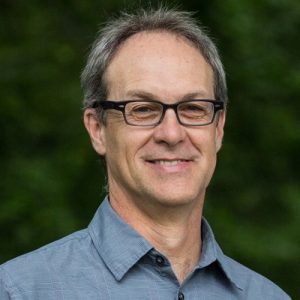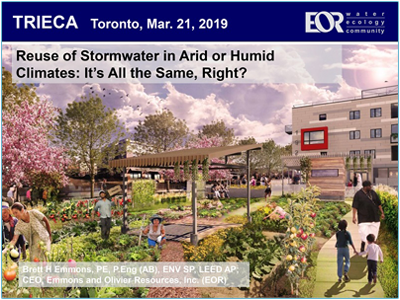TRACK 1
Reuse of Stormwater in Arid or Humid Climates: It’s All the Same, Right? Not Really
ABSTRACT
Stormwater harvesting and use/reuse is fast emerging as a go-to management technique. All over North America, it seems, we are rediscovering the age-old value of catching rainwater for later use.
This is a more integrated paradigm for water than the unsustainable “waste product” approach that prevails. The silos between water sectors, such as supply, wastewater and stormwater, are beginning to crack — but we need to have the right tools to analyze and implement integrated systems before those silos will fully crumble.
Efforts to rewrite Minnesota’s manual on stormwater harvest and use (aka reuse), as well as our collaborations with reuse leaders in California and elsewhere, have illuminated the different challenges associated with making reuse systems operational.
Like water quality standards, the requirements for suitable design tools and calculators are still evolving.
As part of Minnesota’s manual update, various design tools were evaluated and recommendations provided. Experience with different tools has demonstrated that a water budget-based model is needed to for planning, design, and regulatory verification.
In this presentation, examples of stormwater reuse projects will illustrate the importance of applying the right tools in the right setting. In more water-rich areas, where stormwater volume control is a driving goal, models developed for the arid southwest — which emphasize hoarding the water — are not necessarily cross-compatible.
Learning Objectives
1. Learn why stormwater harvest and use is a fast-growing management technique
2. Understand the various reuse tools that exist and their different objectives
3. Understand how to apply the correct reuse model-tool to the situation
ABOUT THE PRESENTER

Brett Emmons
Brett Emmons has 25 years of experience in integrated water resources management. His career includes stormwater work at multiple scales.
Brett co-founded Emmons & Olivier Resources (EOR) and leads new initiatives in several regions of the Midwest and Canada.
He holds a Master’s degree in Civil and Environmental Engineering from the University of Wisconsin and an Undergraduate Degree in Forest Ecology from the University of Illinois.

